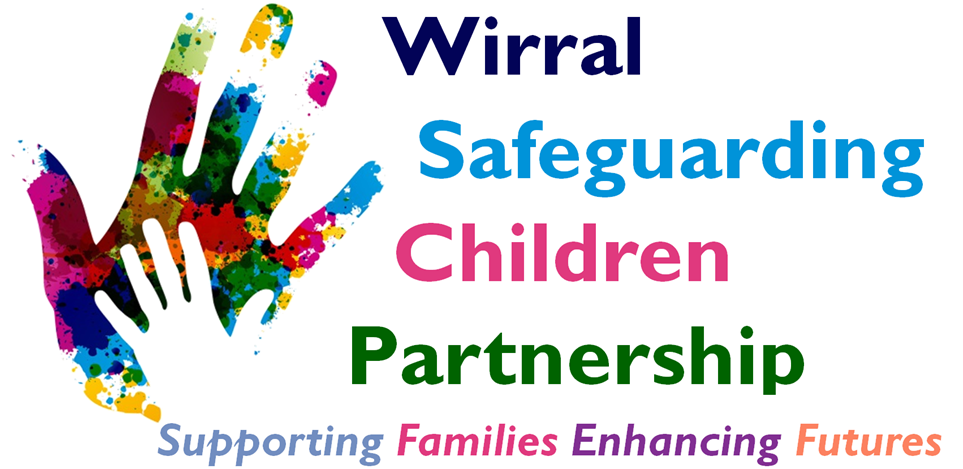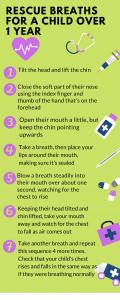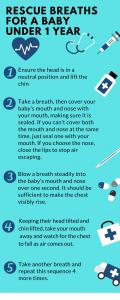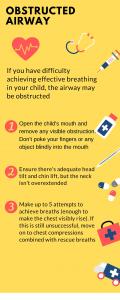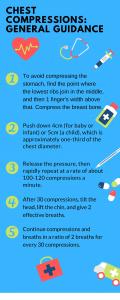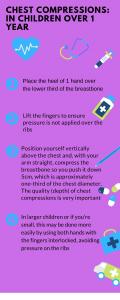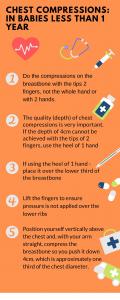How to Resuciate a child
It’s highly recommended that every parent goes on a first aid course, as it makes this process much easier to understand and remember.
Child and Infant CPR steps:
- Ensure that the area is safe – check for hazards, such as electrical equipment or traffic
- Check your child’s responsiveness:
- gently stimulate your child and ask loudly, ‘ are you all right’, in an infant gently tap or flick the sole of their foot. Call their name and see if they respond. Never shake an infant.
- If the child / infant responds by answering or moving – leave them in the position they were found (provided they’re not in danger) – check their condition and get help if needed reassessing the situation regularly
- If the child / infant does not respond then shout for help – carefully turning the child / infant on their back
Resuscitation if the infant is under 1 year:
- Ensure the head is in a neutral position, with the head and neck in line and not tilted
- At the same time, with your fingertips under the point of your child’s chin, lift the chin. Don’t push on the soft tissues under the chin as this may block the airway
Resuscitation if the child is over 1 year old:
- Open your child’s airway by tilting the head and lifting the chin. – To do this, place your hand on their forehead and gently tilt their head back
- At the same time, with your fingertips under the point of your child’s chin, lift the chin. Don’t push on the soft tissues under the chin as this may block the airway
- If you think there may have been an injury to the neck, tilt the head carefully, a small amount at a time, until the airway is open. Opening the airway takes priority over a possible neck injury, however
Check their breathing:
Keeping the airway open, look, listen and feel for normal breathing by putting your face close to your child’s face and looking along their chest.
- Look for chest movements
- Listen at the child’s nose and mouth for breathing sounds
- Feel for air movement on your cheek
- Look, listen and feel for no more than 10 seconds before deciding that they’re not breathing. Gasping breaths should not be considered as normal breathing
If the child is breathing normally:
- Turn them on their side
- Check for continued breathing
- send or go for help – do not leave the child unless absolutely necessary
If the child isn’t breathing or is breathing infrequently and irregularly:
- Carefully remove any obvious obstruction in the mouth
- Give 5 initial rescue breaths (mouth to mouth resuscitation) – see below
- While doing this notice any gag or cough response – this is a sign of life
Rescue Breaths and Obstructed Airways instructions:
If nobody responds to your shout for help at the beginning and you’re alone, continue resuscitation for about 1 minute before trying to get help – for example, by dialling 999 on a mobile phone.
Continue resuscitation until:
- Your child shows signs of life – normal breathing, coughing, movement of arms or legs
- Further qualified help arrives
- You become exhausted
All information is available on NHS website and can be obtained here
This 2-Minute Cartoon Teaches Infant CPR And Should Be Shared With Every Parent You Know
For further help and advice and courses near you please go to St John Ambulance website here
If a child is in immediate danger call 999 without delay
